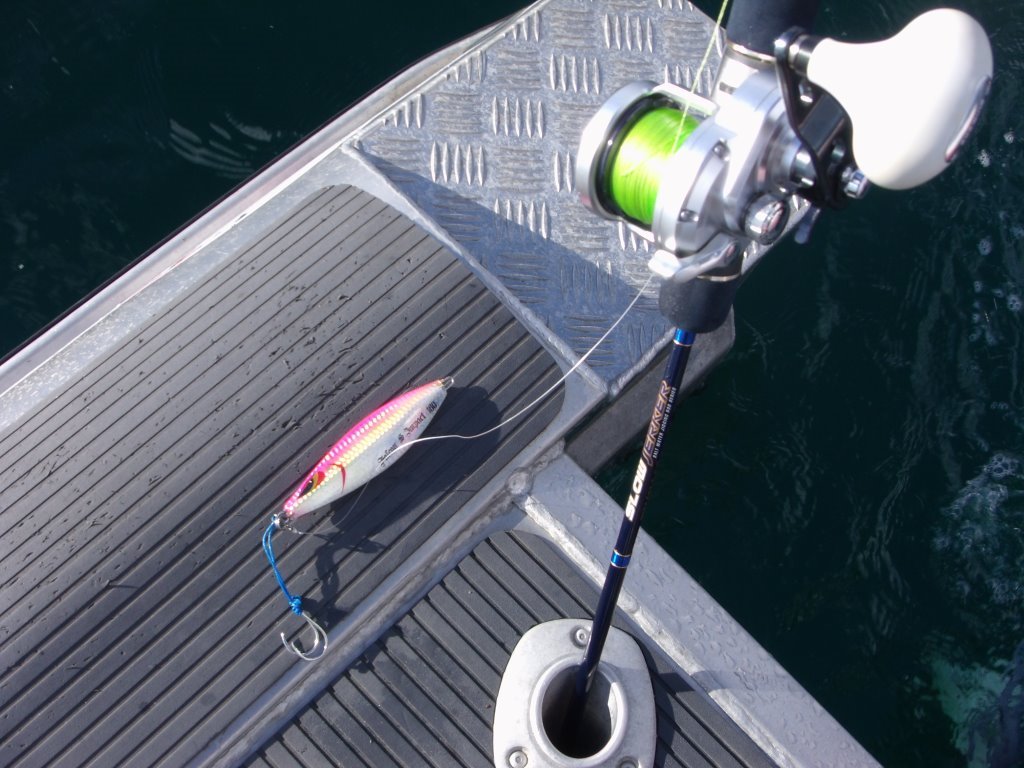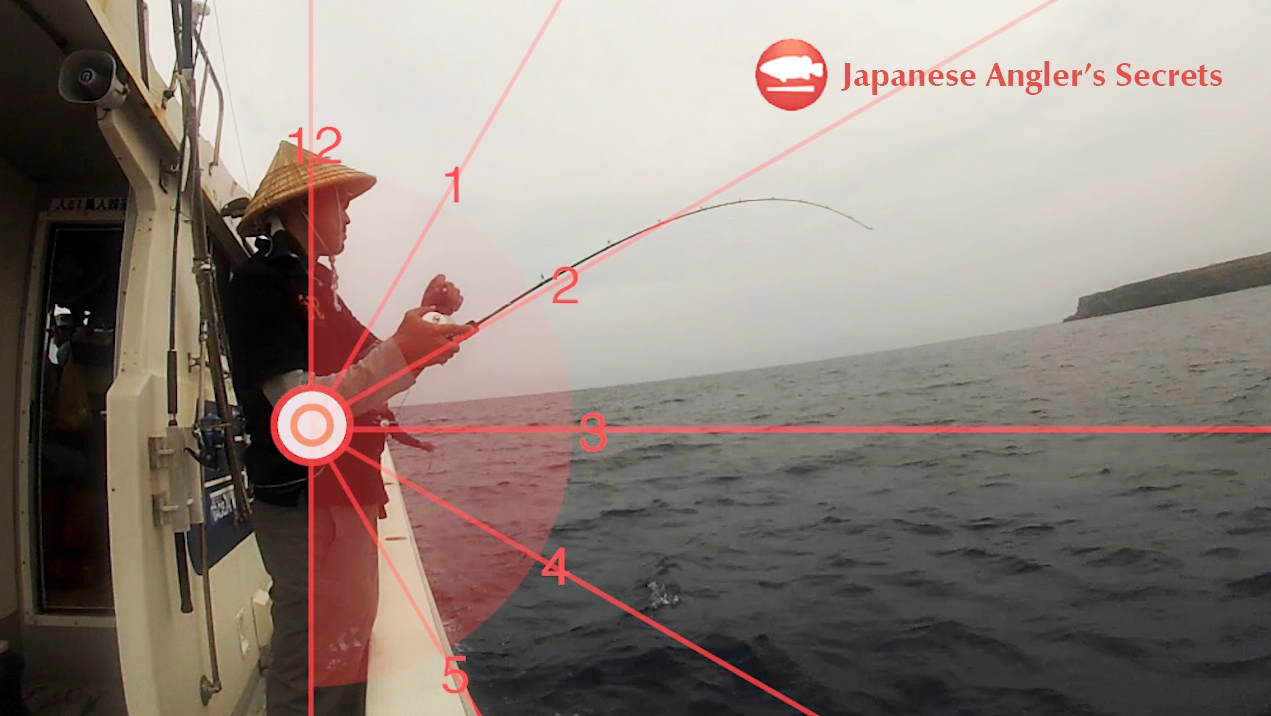Slow Pitch Jigging in Shallow Water
This is a question from a reader in New Zealand.
Being using the 603-3 that you got for us last month and it’s exactly as you stated it would do.
There is more flex and strength in these surprisingly agile rods. The graphite is very special! Even though it’s the middle of winter in New Zealand the fish are still around. We are very lucky to still have a fishery that’s relatively abundant.
In the 23 – 33m depth I’m not getting the “Michael Jordon hangtime” using the heaviest jig I’ve got the Falcon S 160gm. The rod is to strong and just jigs it up. I don’t think I’m getting that hover from the feedback I’m getting through the braid.
Do you think the 603-2 would be able to make the lighter weighted jigs from 100 – 160gms hover in the hangtime that these jigs are designed to perform before they flutter back down? Or should I just go heavy and use 300gms long jigs like the Zest Curve Slider and specific Sea Floor Control jigs?
I’m glad that you are really trying to get this game going. I really respect your challenge.
So, you think 603-3 is too strong for a 160g jig. You must have seen my video. And you see the spring back action of your rod is faster and smaller than mine. Is that correct?
Generally speaking, 603-3 is good for slow-pitching 130g to 180g jig. But it also depends on the currents and depth, in other words, the total amount of water resistance that your line catches. Your water is shallow, but your boat is sea-anchored, not spankered, so my guess was that 603-3 with 150g to 180g would be a perfect match.
There are some degrees in slow pitch setting and the appropriate types of jigs .
603-3 with 130g is usually a strong setting.
150g to 180g is a moderate setting.
180g to 240g is a soft setting.
With SFC jigs for example, Spanky and Rector works well in strong setting.
Rector and Cranky in moderate setting.
Gawky and Cranky in soft setting.
I’ve never used Falcon S. But it is a long fall jig, like Gawky. Long fall jigs usually don’t slide to the side. Don’t have much hang time. The emphasize is in the falling.
The catalog says that Falcon S emphasizes on long lifts and long falls. I assume it means that the simple ups and downs make the jig swim well in different irregular patterns.
I found a YouTube on this jig.
https://www.youtube.com/watch?v=_FOmXz7Tuis
It looks to me that it makes interesting moves. All kinds of falling patterns. And it seems to dance well in lift-up too.
But I suspect that it’s very easy to make a mistake by putting in too much actions with this jig. I would use extra cautions not to be too much flamboyant. It’s important to draw attentions of your targets, but it CAN be too much.
Like other life on this planet, an upcoming object scares off any predators. Suppose you mean to catch a fly. But in spite of the fact it’s such a tiny insect, if it flies right toward your face, your instinct makes you back off.
You never know from which way the fish comes to bite your jig. But the jig movements always have risks of being too much and scaring the fish off. I think it’s important to always balance and combine active movements and subtle soft movements. In this case with Falcon S, maybe it’s nice to go soft on lift-ups, and let it fall actively.
The following page has my friends demonstration with 180g Gawky on 603-3.
>> Slow Pitch, High Pitch, and Long Fall Jerks
Now, Gawky doesn’t play flamboyant. So you have to make actions like this, constantly but softly.
And you think 603-3 is too strong a setting for Falcon S 160g. Maybe you’re right and it’s attracting your targets and scaring them off at
the same time.
But I would think Falcon S 160g would still work with 603-3. In addition to your normal actions, put in some soft actions occasionally, like you do with Gawky. Make short lifts. Move your rod slowly. Have moments of suspension in each pitch, just to lay the jig on its side for an instant. Use 1/4 and 1/8 pitch, sometimes you don’t even have to retrieve. Then long fall. Imitating a bait fish like hesitating to go up, and hurrying back down. Expect the contact to come in the first or the second short lift after a long fall.
Or, you can try to suspend a long fall a couple of times. Say, when you long fall from 12 o’clock to 6 o’clock, suspend the fall at 2 o’clock, let it fall on right away, suspend it again at 4 o’clock and fall to 6 o’clock. Trying to make the fall a little less flamboyant with some change of pace. Expect the contact right after the suspension (line slack stops), or at the first lift after a long fall.
For the kind of hang time movement you are looking for, you should match 130g and 150g Spanky and Rector with 603-3. They slide and swim well. And they are much controllable too. The controllability is what Sato Sensei likes the most about SFC jigs. And Deepliner jigs too. Slow Skip FB and CX of the same weight would work well with 603-3.
If you can send me a video of your jigging, I can make more focused suggestions. It would also help me if you let me know what worked. But anyway, I think there’s a lot more you can try with the tackles you have! There are so many choices that you can make purposefully in slow pitch jigging. Keep on exploring!
But just for your information, 603-2 with a 100g jig on PE1.0 or PE1.2 is so fun in a shallow water. The sensitivity of the rod and little water influence on the line would bring you the total understanding and control of the jig movements. But I am suspecting that if you are fishing on a sea-anchored boat, you can only use this setting in the ideal conditions when you can stay in vertical alignment with your jig.
Related Posts
3 Comments
Leave a Reply Cancel reply
Categories
- 1. SPJ (57)
- 1-1. Principles (9)
- 1-2. Techniques (11)
- 1-3. Setup (17)
- 1-4. FAQ (19)
- 1-5. Tackles (3)
- 1-6. Video Gallery (2)
- 2. Other Offshore Games (5)
- 3. Fishing Report (105)
- 3-1. Totos (25)
- 3-2. Readers (72)
- 4. Fish Cooking (19)
- 4-1. Iki-Jime (3)
- 4-2. The Art of Sashimi (5)
- 4-3. Recipe (7)
- 4-4. Seasoning (3)
- 5. Fishing Charter (6)
- Fish (12)





Lovely analysis, can’t wait to practice with the jigs you will send!
It’s been shipped Dimitri. Hope you will enjoy these jigs!
Send me photos when you catch some!
Just an observation but the sea falcon pictured on the deck of the boat seems to have one set of assist hooks attached yet the man doing the testing in the Japanese video has top and bottom sets attached.
I just wonder if your tests were done with 1 or 2 sets and whether a second set of hook may balance the jig more, there creating more sideways “hangtime”?
I imagine you have already tested this theory in which case you’ll ignore this comment.
Daz.